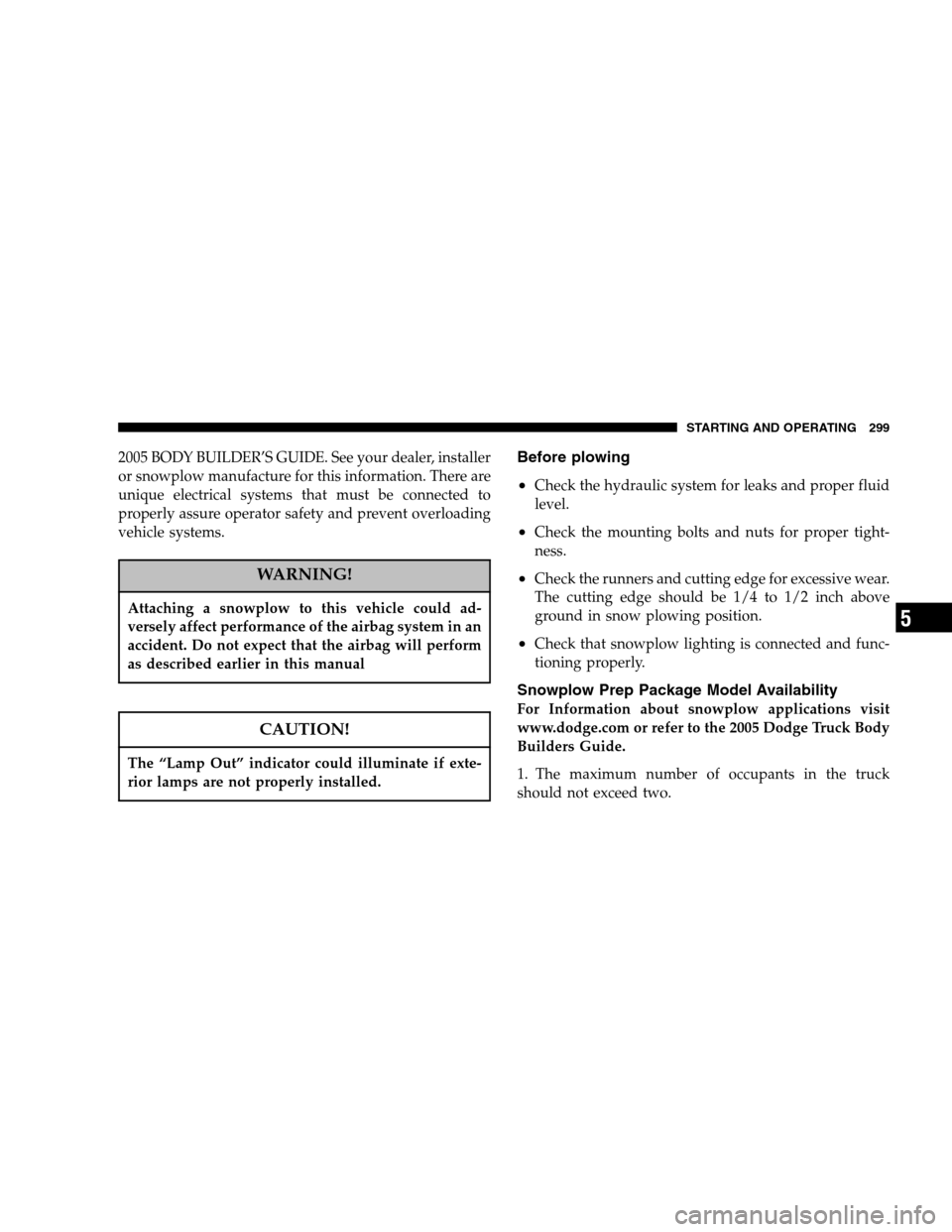Page 57 of 448

of child restraints can be used rearward-facing: infant
carriers and�convertible�child seats. Both types of
child restraints are held in the vehicle by the lap/
shoulder belt.
•The infant carrier is only used rearward-facing in the
vehicle. It is recommended for children who weigh up
to about 20 lbs (9 kg).�Convertible�child seats can be
used either rearward-facing or forward-facing in the
vehicle. Convertible child seats often have a higher
weight limit in the rearward-facing direction than
infant carriers do, so they can be used rearward-facing
by children who weigh more than 20 lbs (9 kg) but are
less than one year old.
•Rearward-facing child seats mustNEVERbe used in
the front seat of a vehicle with a front passenger airbag
unless the airbag is turned off. An airbag deployment
could cause severe injury or death to infants in this
position.
•Children who weigh more than 20 lbs (9 kg) and who
are older than one year can ride forward-facing in the
vehicle. Forward-facing child seats and convertible
child seats used in the forward-facing direction are for
children who weigh 20 to 40 lbs (9 to 18 kg) and who
are older than one year. These child seats are also held
in the vehicle by the lap/shoulder belt.
•The belt-positioning booster seat is for children weigh-
ing more than 40 lbs (18 kg), but who are still too small
to fit the vehicle’s seat belts properly. If the child
cannot sit with knees bent over the vehicle’s seat
cushion while the child’s back is against the seat back,
they should use a belt-positioning-booster seat. The
child and booster seat are held in the vehicle by the
lap/shoulder belt. (Some booster seats are equipped
with a front shield and are held in the vehicle by the
lap portion.) For further information refer to
www.seatcheck.org.
THINGS TO KNOW BEFORE STARTING YOUR VEHICLE 57
2
Page 58 of 448

WARNING!
•Improper installation can lead to failure of an
infant or child restraint. It could come loose in a
collision. The child could be badly injured or
killed. Follow the manufacturer’s directions ex-
actly when installing an infant or child restraint.
•A rearward facing child restraint should only be
used in a rear seat, or in the front seat if the
passenger’s front airbag is Off. If the airbag is left
On, a rearward facing child restraint in the front
seat may be struck by a deploying passenger
airbag which may cause severe or fatal injury to
the infant.
Here are some tips for getting the most out of your child
restraint:
•Before buying any restraint system, make sure that it
has a label certifying that it meets all applicable Safety
Standards. We also recommend that you make sure
that you can install the child restraint in the vehicle
where you will use it before you buy it.
•The restraint must be appropriate for your child’s
weight and height. Check the label on the restraint for
weight and height limits.
•Carefully follow the instructions that come with the
restraint. If you install the restraint improperly, it may
not work when you need it.
•The passenger seat belts are equipped with either
cinching latch plates or switchable seat belt retractors,
58 THINGS TO KNOW BEFORE STARTING YOUR VEHICLE
Page 60 of 448

•When your child restraint is not in use, secure it in the
vehicle with the seat belt or remove it from the vehicle.
Do not leave it loose in the vehicle. In a sudden stop or
collision, it could strike the occupants or seat backs
and cause serious personal injury.
WARNING!
Improper installation can lead to failure of an infant
or child restraint. It could come loose in a collision.
The child could be badly injured or killed. Follow
the manufacturer’s directions exactly when install-
ing an infant or child restraint.
Lower Anchors and Tether for CHildren (LATCH)
Each vehicle is equipped with the child restraint anchor-
age system called LATCH, which stands for Lower
Anchors and Tether for CHildren. LATCH child restraint
anchorage systems are installed in the Standard Cab
passenger seat position and the Quad Cab rear seat
outboard positions. LATCH equipped seating positions
feature both lower anchor bars, located at the back of the
seat cushion, and tether strap anchorages, located behind
the seatback (refer to Child Restraint Tether Anchor later
in this section).
Identification dots are located above the standard cab
front seat lower anchorages as a guide for locating lower
anchors.
NOTE:For children riding in the front seat of a Stan-
dard Cab model refer to the “Passenger Airbag On/Off
Switch” located in this section.
60 THINGS TO KNOW BEFORE STARTING YOUR VEHICLE
Page 70 of 448

Safety Checks You Should Make Inside The
Vehicle
Seat Belts
Inspect the belt system periodically, checking for cuts,
frays and loose parts. Damaged parts must be replaced
immediately. Do not disassemble or modify the system.
Seat belt assemblies must be replaced after an accident if
they have been damaged (bent retractor, torn webbing,
etc.) or if the front airbags have deployed. If there is any
question regarding belt or retractor condition, replace the
belt.
Airbag Light
The light should come on and remain on for 6 to 8
seconds as a bulb check when the ignition switch is first
turned ON. If the light is not lit during starting, see you
authorized dealer. If the light stays on, flickers or comeson while driving, have the system checked by an autho-
rized dealer. If there is a problem with the airbag light the
seatbelt light will flash.
Safety Checks You Should Make Outside The
Vehicle
Tires
Examine tires for tread wear or uneven wear patterns.
Check for stones, nails, glass or other objects lodged in
the tread.
Inspect for tread cuts or sidewall cracks. Check wheel
nuts for tightness and tires for proper pressure.
Lights
Check the operation of all exterior lights. Check turn
signal and high beam indicator lights on the instrument
panel.
70 THINGS TO KNOW BEFORE STARTING YOUR VEHICLE
Page 123 of 448
DRIVER ADJUSTABLE PEDALS — IF EQUIPPED
The power adjustable accelerator and brake pedals allow
the driver to establish a comfortable position relative to
the steering wheel and pedals.
Adjustment
1. Position the driver seat so that you are at least 10
inches (254 mm) away from the airbag located in the
center of the steering wheel.
2. Fasten and adjust the seatbelts.
3. Move the adjustable pedal switch, located to the left of
the steering column near the parking brake release, in the
direction you desire to move the pedals.
4. The pedalscannotbe adjusted when the vehicle is in
R (Reverse) or when the Speed Control is SET.
UNDERSTANDING THE FEATURES OF YOUR VEHICLE 123
3
Page 163 of 448

the pointer moves to either extreme left or right and
remains there during normal driving, the electrical sys-
tem should be serviced.
NOTE:If the gauge pointer moves to either extreme of
the gauge, the “Check Gages” indicator will illuminate
and a single chime will sound.
3. Turn Signal Indicators
Lights in instrument cluster flash when outside turn
signals are operating. (See page 118 for more informa-
tion.)
4. Tachometer
The tachometer indicates engine speed in revolutions per
minute.CAUTION!
Do not operate the engine with the tachometer
pointer at high rpm for extended periods. Engine
damage may occur.
5. Airbag Indicator Light
The indicator lights and remains lit for 6 to 8 seconds
when the ignition is first turned on. If the light stays on,
flickers or comes on while driving, have the airbag
system checked by an authorized dealer.
6. High Beam Indicator
This indicator shows that headlights are on high
beam.
7. Seat Belt Reminder Light
When the ignition switch is first turned ON, this
light will turn on for 5 to 8 seconds as a bulb check.
During the bulb check, if the driver’s seat belt is
UNDERSTANDING YOUR INSTRUMENT PANEL 163
4
Page 299 of 448

2005 BODY BUILDER’S GUIDE. See your dealer, installer
or snowplow manufacture for this information. There are
unique electrical systems that must be connected to
properly assure operator safety and prevent overloading
vehicle systems.
WARNING!
Attaching a snowplow to this vehicle could ad-
versely affect performance of the airbag system in an
accident. Do not expect that the airbag will perform
as described earlier in this manual
CAUTION!
The “Lamp Out” indicator could illuminate if exte-
rior lamps are not properly installed.
Before plowing
•
Check the hydraulic system for leaks and proper fluid
level.
•Check the mounting bolts and nuts for proper tight-
ness.
•Check the runners and cutting edge for excessive wear.
The cutting edge should be 1/4 to 1/2 inch above
ground in snow plowing position.
•Check that snowplow lighting is connected and func-
tioning properly.
Snowplow Prep Package Model Availability
For Information about snowplow applications visit
www.dodge.com or refer to the 2005 Dodge Truck Body
Builders Guide.
1. The maximum number of occupants in the truck
should not exceed two.
STARTING AND OPERATING 299
5
Page 432 of 448

Air Cleaner, Engine (Engine Air Cleaner Filter) . 349,375
Air Conditioner Maintenance............... 355
Air Conditioning Refrigerant.............355,356
Air Conditioning System................207,355
Air Conditioning System, Zone Control........ 211
Air Filter.............................. 349
Air Pressure, Tires....................269,276
Airbag..............................45,51
Airbag Light.........................70,163
Airbag On/Off Switch..................... 51
Airbag, Side............................ 54
Alarm..............................29,166
Alignment and Balance................... 276
Alterations/Modifications, Vehicle............. 8
Antifreeze (Engine Coolant)................ 363
Capacities........................... 397
Anti-Lock Warning Light...............164,259
Anti-Theft System.....................29,166
Appearance Care........................ 379Ashtray............................... 144
Automatic Transmission................... 370
Adding Fluid......................... 371
Fluid and Filter Changes................. 372
Fluid Level Check...................... 370
Fluid Type........................371,399
Shift Indicator........................ 166
Shifting............................. 237
Special Additives...................... 373
Axle Fluid.......................291,369,399
Axle Lubrication.....................291,369
Ball Joints............................. 357
Battery............................... 354
Blanket..........................232,355
Emergency Starting..................... 327
Bearings.............................. 373
Belts, Drive............................ 348
Belts, Seat.............................. 34
432 INDEX